It was the year that saw the first non-stop flight from London to Paris, the year that saw the launch of the Titanic – and the end of the last Chinese Imperial Dynasty. It was 1911 and now 33 members of the Oxford Wine Club can say they’ve drunk wine over 100 years old.
A little fragile perhaps but still vivid on the nose with aromas of ginger, citrus and burnt sugar. A little less length than its younger siblings but still a force to be reckoned with. And there’s still stock available should you want to buy a bottle of this rare and remarkable wine.
We owed this extraordinary opportunity to Michael Palij MW and to Antonio Sorgato of Toro Albalá who presented a ‘Century of PX’ to us on 20 March 2014. Toro Albalá’s PX is not just any PX. Those who know the wine will know that everyday PX (if you can use such a phrase of a wine so distinctive in appearance and flavour) is not hard to come by but their PX is a wine that really has no right to exist. Many of the ten bottles we tasted came from barrels of wine hoarded as family wealth by peasant owners whom Antonio and Toro Albalá’s owner had hunted down in the villages of Montilla-Moriles in South-west Spain. These barrels gone, there is no more of the wine to bottle; no way it can be re-found or re-created. We had the privilege of drinking the very last of the 1976 and the 1939.
Antonio Sorgato, Export Director in name but General Manager in fact, dedicated his story of Toro Albalá’s PX to the men and women who make this wine.
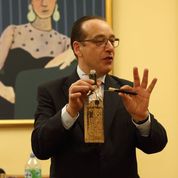 Harvesting starts – in hot years – at 3.00 in the morning. Then the grapes are laid out on mats to dry in the sun for a week or so. Fermentation of the sweet juice that results takes the wine only to 5-6% alcohol for 400 grams of sugar per litre kills most fermentation stone dead. For a litre of wine you need 5 kilos of grapes, rather than the usual one kilo. Fortified to 17% or more the wine then goes – unfiltered and sulphite-free – into old American oak barrels to age. For ‘everyday’ PX that’s it. For the Toro Albalá wines the winemaker adds bone dry 40 year old fino (amontillado in other words, also made from Pedro Ximenez grapes). This reduces the sugar impact and provides extra acidity that keeps the wine vital for generations. The company has wines going back to 1844. Don’t make the mistake of thinking these are solera wines where the oldest component is 50 or 100 years old. These are true single vintage wines, aged in cask and then bottle
Harvesting starts – in hot years – at 3.00 in the morning. Then the grapes are laid out on mats to dry in the sun for a week or so. Fermentation of the sweet juice that results takes the wine only to 5-6% alcohol for 400 grams of sugar per litre kills most fermentation stone dead. For a litre of wine you need 5 kilos of grapes, rather than the usual one kilo. Fortified to 17% or more the wine then goes – unfiltered and sulphite-free – into old American oak barrels to age. For ‘everyday’ PX that’s it. For the Toro Albalá wines the winemaker adds bone dry 40 year old fino (amontillado in other words, also made from Pedro Ximenez grapes). This reduces the sugar impact and provides extra acidity that keeps the wine vital for generations. The company has wines going back to 1844. Don’t make the mistake of thinking these are solera wines where the oldest component is 50 or 100 years old. These are true single vintage wines, aged in cask and then bottle
So, consider the economics…and marvel at the dedication and commitment of all concerned.
We started the tasting with the ‘everyday’ wine of the Bodegas, the 2010 which is available commercially at £15 per half bottle. Deep mahogany in colour the nose held ginger, citrus, aged marmalade and figs. The lack of acidity from added fino means this wine will age no more than 10 years or so by which time it will be little more than, in Antonio’s words, ‘aged marmalade’.
Then we moved on to the ‘real thing’. This was the 1983 yet still only £20 per half bottle. This had the same black core with a powerful yellow rim (reminiscent of turmeric). The immediate aroma – common to almost all the wines – was of vivid citrus. Then came figs, chocolate, coffee, orange peel, vanilla and a touch of gunpowder. In Britain this was the year of mandatory seat belts and Maggie Thatcher’s first visit to the Falklands.
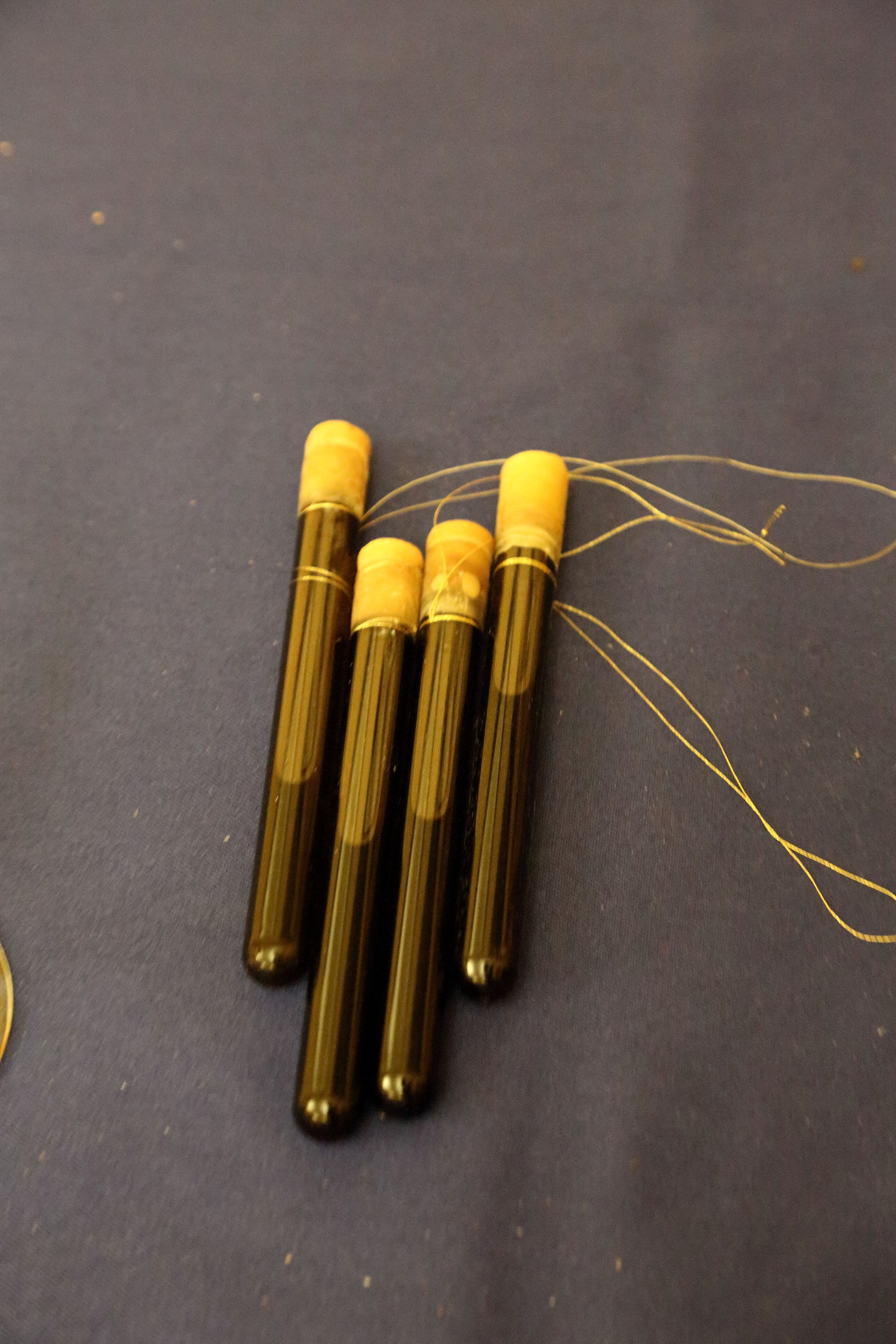
From 1983 to 1976. One of our two bottles was corked but with a wine of this intensity and quality you don’t need much in the glass. This 95 Parker point wine had more intensity and more ‘balsamic’ notes than the 1983 with white pepper cutting the richness.
It also had the most extraordinary label that any of us had ever seen. Unique, hand-crafted, individually made labels are a keynote of Toro Albalá. Some are sheets of wood, with designs burnt in by hand and each bottle numbered by the two men who make the boxes and labels. Inside, a certificate from the local notary to guarantee the wine’s authenticity. Some have little vials of the wine attached – an extra 5 cl or so to taste in advance, to give away, or just to ensure you get to keep the proper bottle.
The 1976 and 1962 labels were magnetic with an outer fold opening up to reveal a picture, a text, a signature, a seal. The 1976 has a painting of a stamp (in fact the painting) and inside (in a secret compartment).the actual stamp. The boss of the winery had bought 1234 stamps so that was the number of bottles that could be produced in the year that Concorde made its maiden flight.
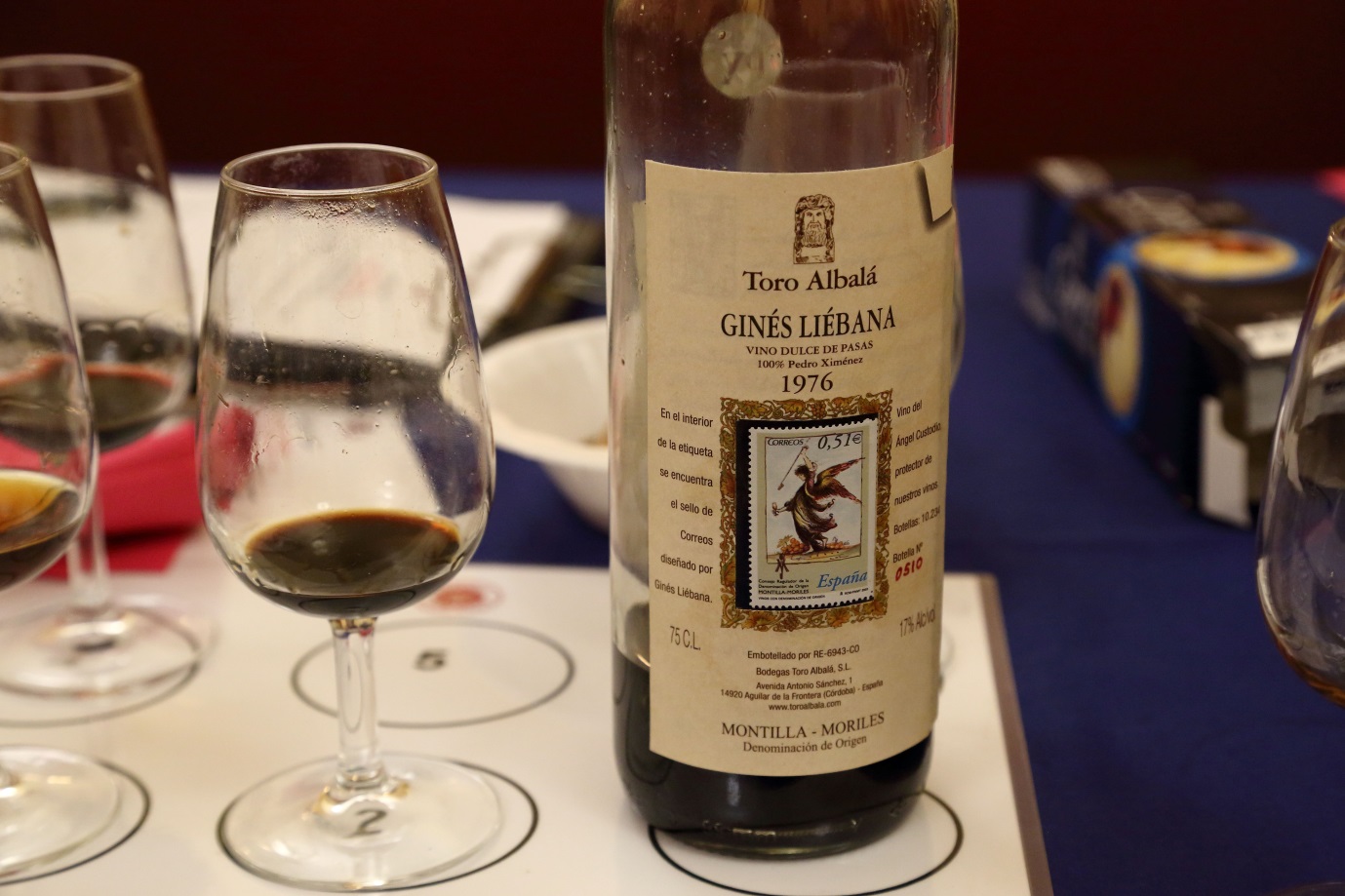
The 1962, available at £135 per bottle from Michael, shared that citrus note but this time it was sweet lime spiced with black pepper, cloves, cumin and marmalade plus a dash of violets. This wine had seen 50 years in cask – starting when the Beatles were singing ‘Love Me Do’ and the Cuban Missile Crisis was unfolding.
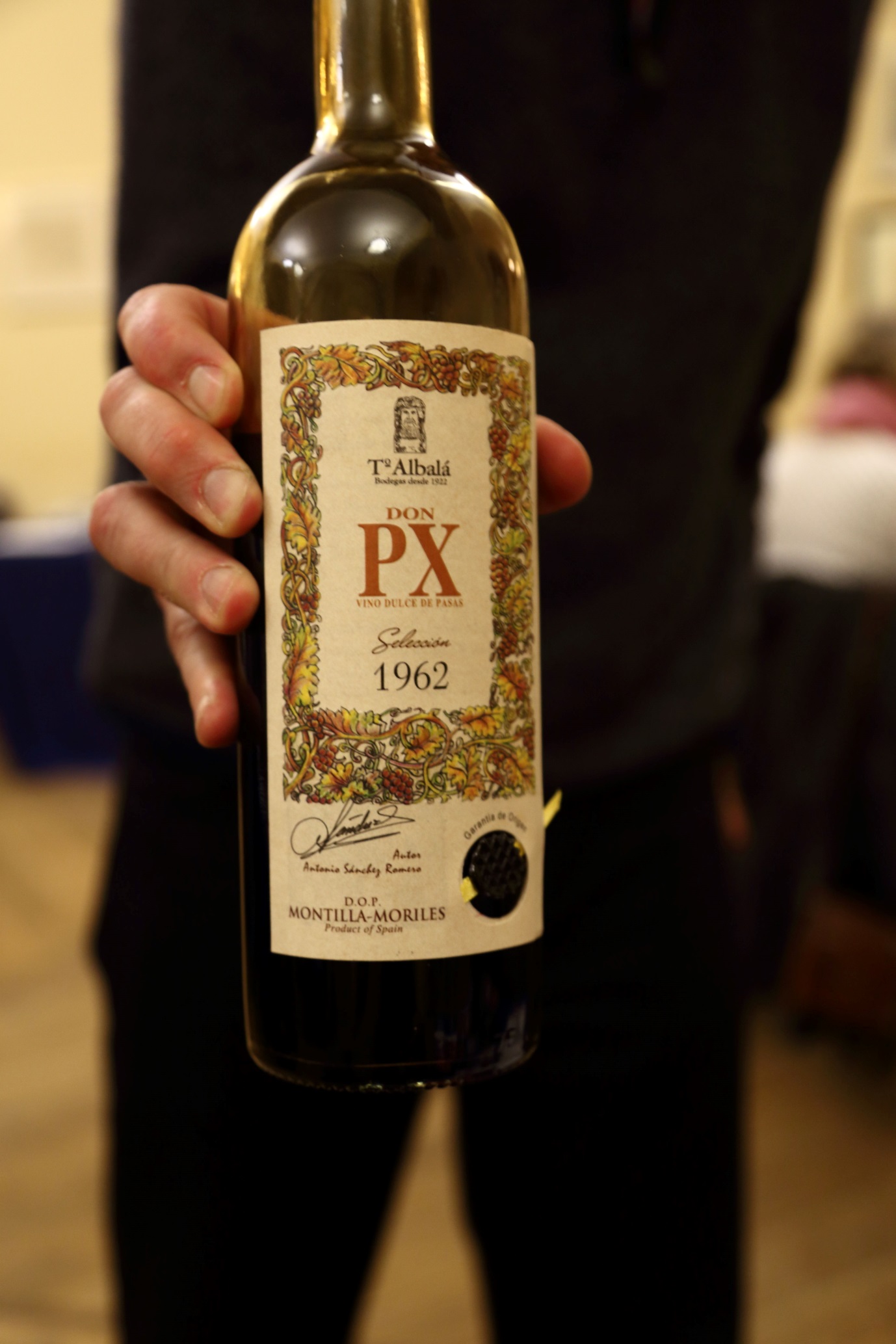 Each table had started with plates of food to test and match against the wine. Vanilla ice-cream with the first wine, Crema Catalana for the second, then on to chilli-spiced nuts, slices of brioche chocolate chip cookies, home-made panforte, blue cheese and grilled sweet-cured bacon. The best were those with both sugar and spice. It didn’t seem to matter too much whether the spice was more aromatic or more hot –the PX coped with them all. Brioche was probably the least successful pairing – just not enough weight.
Each table had started with plates of food to test and match against the wine. Vanilla ice-cream with the first wine, Crema Catalana for the second, then on to chilli-spiced nuts, slices of brioche chocolate chip cookies, home-made panforte, blue cheese and grilled sweet-cured bacon. The best were those with both sugar and spice. It didn’t seem to matter too much whether the spice was more aromatic or more hot –the PX coped with them all. Brioche was probably the least successful pairing – just not enough weight.
The 1961, the next wine, is –since Thursday 20th – no longer available. We had the last bottles. 1961 was of course a famous vintage in much of Europe – as well as the year of the Blackie the dog’s first space flight. This year in Montilla-Moriles produced a wine which ‘perfectly walked the line of wood and fruit’. More coffee and caramel, more cloves and raisins than the 1962 but still the same lifted citrus overlay. Labels and boxes for this wine were individually made and lettered by a father and son pair working with wood from old barrels.
Now we jumped back in time to 1949. This was the year the People’s Republic of China was founded, and Newfoundland became Canada’s 10th province (thank you Michael!). This was also the most alcoholic of the wines – nearly 20%, after the wine-maker decided the wine needed more alcoholic weight to complement its length and richness. This wine rates 97 Parker points. The nose was a little more floral than the other wines but shared the same richness of spice and herbs. In the mouth it was potent, seemingly indestructible. This wine is £150 per bottle (the perfect gift for anyone coming up to 65 this year).
Then came the 1946, a year memorable (of course) for the first bikini of modern times. Like the bikini it has more than stood the test of time. Remarkably rounded with vivid acidity this wine had notes of quince and melon along with dried fruit and sweeter spices such as cinnamon. The 100 point accolade (which no-one expected) came from Parker’s ‘new man’ in Spain and Michael’s phone rang off the hook as buyers scrambled to complete their collections or taste this, the oldest of all commercially available 100 pointers. It’s £180 a bottle and Michael still has stock. These prices may sound high but a bottle of PX could sustain (if you wished) months of small tasting glasses – and you need no more than a sniff and a taste to capture the glory.
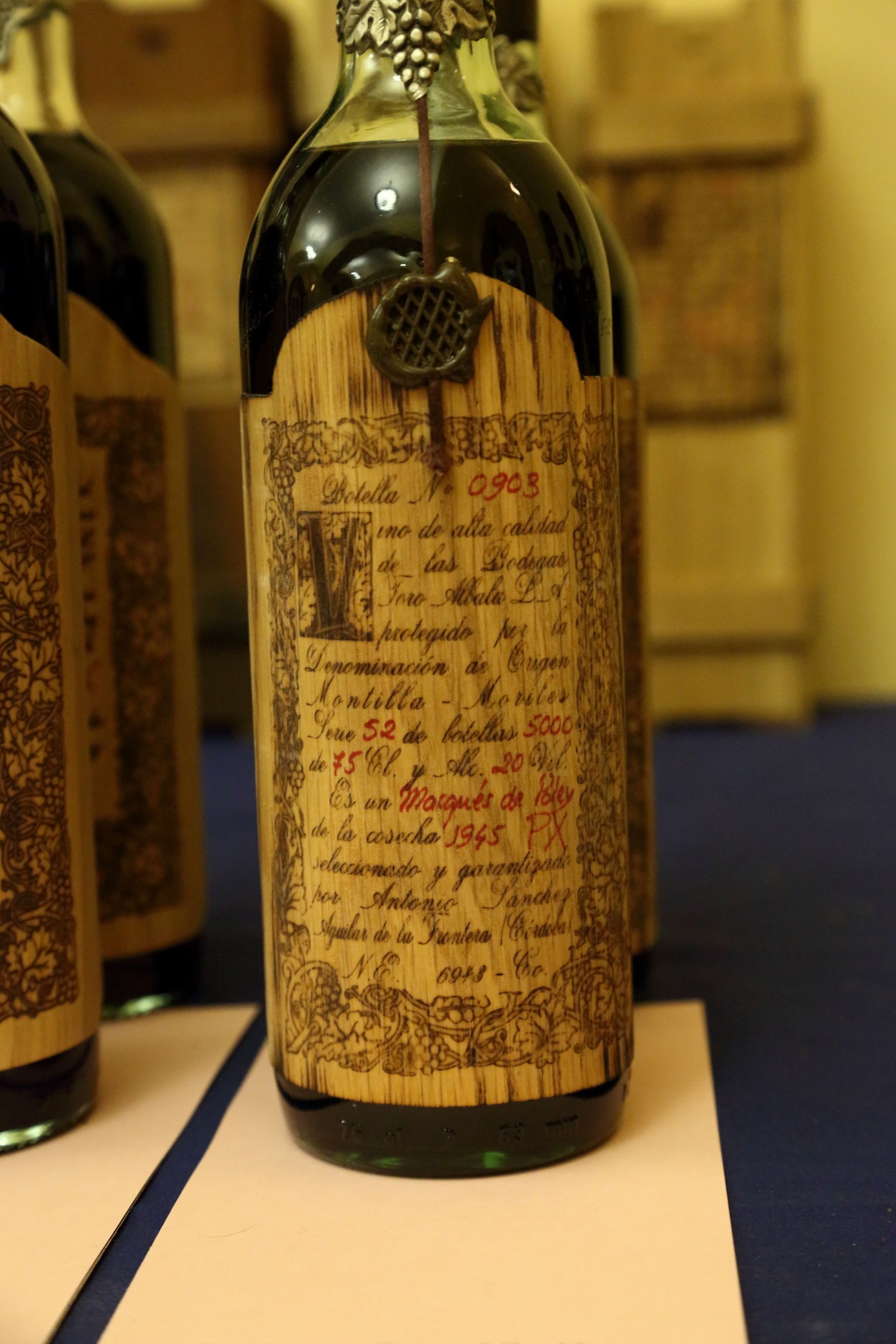 Only three bottles are left of the next wine, the 1945, which was perhaps a hotter year for the wine had more menthol notes and the spices now were roasted and dried rather than fresh ground, though the turmeric edge of colour on the glass was still vivid.
Only three bottles are left of the next wine, the 1945, which was perhaps a hotter year for the wine had more menthol notes and the spices now were roasted and dried rather than fresh ground, though the turmeric edge of colour on the glass was still vivid.
The 1939 is now sold out (again we had the last bottles). Though the acidity of this wine is beginning to fade it was still wholly integrated, wonderfully complex and entirely complete. This was a year of legendary debuts – Superman, Sinatra and Presley – and one memorable if unhappy ending. It was the year of the last public guillotining in France.
Now we came to 1911. This wine was, finally, showing its age. More fragile, less balanced, more tannin-heavy and with less length in the finish but the nose was still vivid and fresh with burnt sugar and ginger notes underlying the citrus. £400 for a piece of bottled history – and there are still 60 bottles left…

Too many superlatives here the reader may think…but none of those privileged to be at the tasting will ever forget it. Thank you Michael, thank you Antonio.
GH: 22/3/14